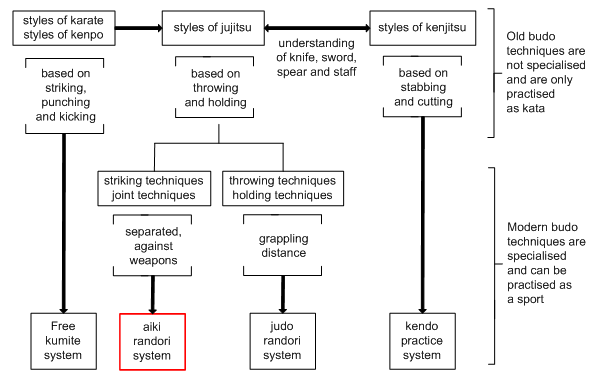From my own experience, a match between judo/aikido starts at a distance doing Aikido and as soon as the distance closes, switching to judo. I have no link to videos as I never bothered filming any. However, this is what Tomiki found when he started to introduce Judo randori style play into Aikido: his students (who all knew some Judo) would automatically revert to Judo as soon as one closed the gap between the players.
Thus, any match between a judo-ka and aikido-ka will rely on whichever is the best at keeping the other at his distance. So, in grappling Judo wins. At a distance, Aikido wins1. This to be taken with a metric tonne of salt based on the skill of both players, what they eat that morning, and how long their hair is. ^_~
Tomiki always viewed both arts as complementary. He was a 8th dan in Judo under Kano and 8th dan under Ueshiba. In fact, Kano asked Ueshiba to take Tomiki as a student during the hell dojo year where Ueshiba aikido was brutal. I think that gives Tomiki some authority over both Judo, Aikido, and how they interact.
Tomiki wrote a paper on how ideas from Judo influenced the Aikido system (Shodokan) he created. In it, you can clearly see that the both arts are used at different distances: judo is close by, aikido is further away. Here is a diagram from one of Tomiki sensei papers on the subject. I found it in Nariyama's book which refers to it as The Development of Japanese Budo by Kenji Tomiki (1963) on page 33:

It clearly shows his thinking on the subject. Tomiki's Judo Appendix: Aikido might delve into the matter some more but I have not read the book so cannot comment and it is really expensive!
Tomiki introduced the tanto in Aikido randori because all his players were old hand at judo and he needed a way to maintain the aikido distance. The other reason was to give tanto a possibility to score thus leading to stronger attacks.
1: As an aside, this is the same way that that kicks/punches wins vs grappling (really biased source) if one player stays at the right distance. But grapling wins close in (yet another really biased source).
